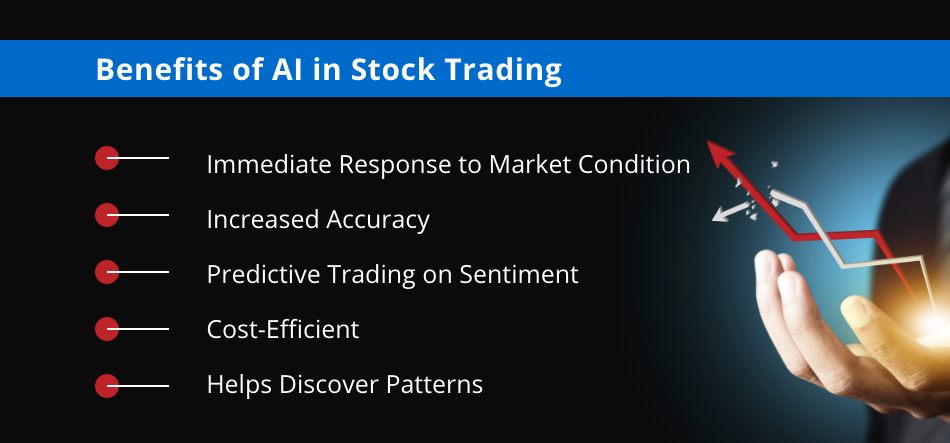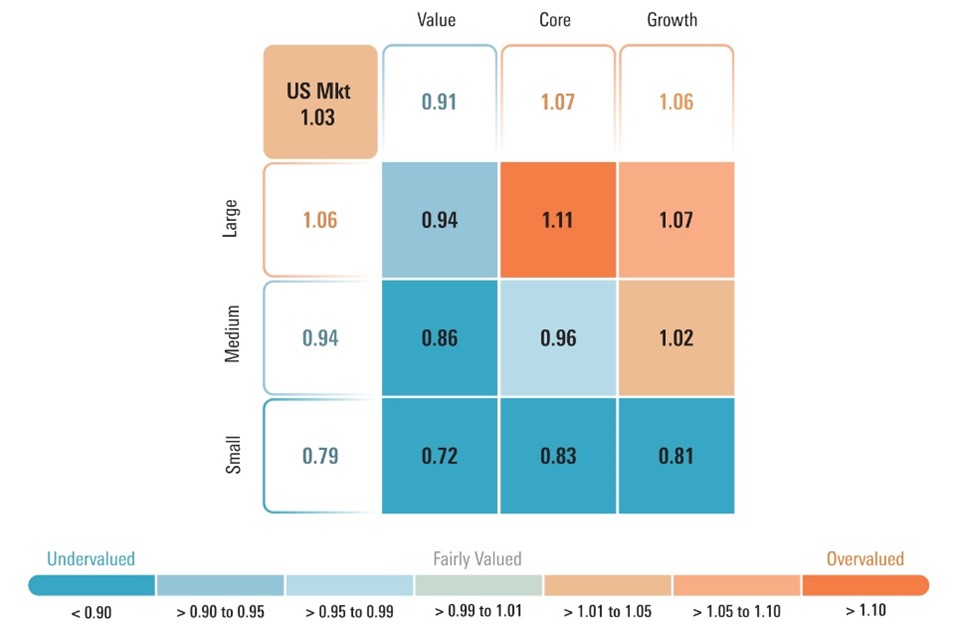For AI-driven trading platforms and stock prediction platforms to deliver accurate and reliable insights it is crucial to assess the accuracy of the data they use. Inaccurate data can lead to poor predictions, financial losses, or mistrust towards the platform. Here are 10 of the top strategies to evaluate data sources and the quality.
1. Verify data source
Find out where the data came from: Make sure you make use of reputable and well-known data suppliers.
Transparency. Platforms should make their data sources clear and regularly updated.
Avoid single-source dependence: Reliable platforms integrate information from multiple sources to minimize errors and biases.
2. Examine the freshness of data
Data in real-time or delayed format Choose if the platform offers real-time data or delayed. Real-time data can be crucial to trade in active fashion. Data that is delayed is adequate to conduct long-term studies.
Verify the frequency of updating information (e.g. hourly or minute by minute or daily).
Accuracy of historical data Verify that the data is consistent and free of anomalies or gaps.
3. Evaluate Data Completeness
Find missing data. Look for gaps in the historical data, missing tickers or financial statements that aren't complete.
Coverage: Ensure the platform covers a wide variety of indices, stocks and markets that are relevant to your trading strategy.
Corporate actions: Find out if your platform takes into account dividends and stock splits as well as mergers and other corporate events.
4. Test Data Accuracy
Cross-verify the data: Check data from the platform with other sources of data you trust to ensure that the data is consistent.
Error detection: Watch out for price errors, mismatched financial metrics, or other outliers.
Backtesting. Make use of the historical data to test your trading strategy and determine whether it's in line with your expectations.
5. Assess the data's Granularity
Detail Level of detail: Make sure that the platform offers granular data like intraday prices and volume, spreads, bid and ask, as well as depth of order book.
Financial metrics - Make sure to check whether there are financial metrics in a comprehensive statement (income statements, balance sheets, cash flows) and key ratios included (P/E/P/B/ROE etc.). ).
6. Check Data Cleaning and Processing
Normalization of data: Ensure that the platform normalizes data (e.g., adjusting for splits, dividends) to maintain consistency.
Outlier handling - Check how the platform handles anomalies and outliers.
Missing data imputation - Check whether the platform uses effective methods to fill in the data gaps.
7. Examine Data Consistency
Timezone alignment Data alignment: align according to the same zone to avoid discrepancies.
Format consistency: Ensure that the data has been presented consistently (e.g. currency, units).
Verify that the data is consistent across markets: Check for consistency from various exchanges and/or markets.
8. Evaluate the Relevance of Data
Relevance to trading strategy: Ensure the data aligns with your style of trading (e.g., technical analysis, quantitative modeling, fundamental analysis).
Selecting features: Determine whether the platform offers relevant features (e.g., sentiment analysis, macroeconomic indicators or news data) that enhance the accuracy of predictions.
Review Data Security Integrity
Data encryption: Ensure that the platform is encrypted to safeguard information during storage and transmission.
Tamper proofing: Ensure that the information on the platform isn't being manipulated.
Conformity: Ensure whether the platform is compliant with data protection rules (e.g. CCPA, GDPR).
10. Transparency in the AI Model of the Platform is tested
Explainability: The system must provide insights into the way AI models employ data to make predictions.
Examine for detection of bias. The platform should actively detect and correct any biases in the model or in the data.
Performance metrics: Examine the platform's track record and the performance metrics (e.g. accuracy and precision, recall) to determine the accuracy of its predictions.
Bonus Tips
Reviews from users: Read user reviews from other users to get a feel of the quality and reliability of the data.
Trial time: You can test the data quality and features of a platform with an online demo or trial before deciding to purchase.
Customer support: Ensure that the platform provides a robust support for customers to resolve issues related to data.
These guidelines will assist you to better evaluate the accuracy of data as well as the sources used by AI software for stock prediction. This will enable you to make more informed decisions when trading. Have a look at the top rated ai stocks advice for more info including chart ai trading assistant, ai for trading, ai stock trading app, best ai stock trading bot free, trading ai, ai stock trading app, best ai for trading, ai trade, best ai for trading, best ai for trading and more.

Top 10 Tips For Assessing The Regulatory Compliance For Ai Stock Predicting/Analyzing Trading Platforms
Compliance with regulatory requirements plays an essential role in evaluating AI platforms for analysis and prediction of stocks. Compliance ensures that the platform is operating within legal frameworks, protects user data, and adheres to financial regulations, which reduces the possibility of legal problems or financial penalties. Here are 10 best strategies to determine the regulatory compliance on these platforms.
1. Verify License and Registration
Regulators: Make sure the platform's license and registration is registered with the relevant financial regulators (e.g. SEC or FCA in the United States, ASIC or ASIC in Australia).
Broker partnerships: Verify that the brokers who are integrated into the platform are also properly licensed.
Public Records: Visit the website of your regulator agency for details on the status of your registration or past violations, as well as other pertinent information.
2. Look for data privacy Compliance
GDPR If a platform is operating within the EU or offering services to EU users the platform must be in compliance with the General Data Protection Regulation.
CCPA : California Consumer Privacy Act (CCPA) compliance must be checked by users.
Data handling policies: Go through the platform's policy on privacy of data to ensure that it clarifies exactly how data from users are stored, used and shared.
3. Evaluate Anti-Money Laundering (AML) measures
AML Policies: The platform should have strong AML (Anti-Money Laundering) policies to detect the money laundering process and stop it.
KYC procedures: Check if the platform uses Know Your Customer (KYC) that verifies the identity of users.
Transaction monitoring: Verify that the platform tracks transactions to spot suspicious behaviour and notify authorities.
4. Verify that you are in compliance with Trading Regulations
Market manipulation: Make sure that the platform has measures to avoid market manipulation like washing trading, spoofing.
Types of orders: Make sure that the platform adheres to the regulations regarding types of orders.
Best execution: Make sure that the platform adheres to best execution practices to ensure trades are executed at the highest price.
5. Review Cybersecurity Compliance
Data encryption: Make sure that the platform safeguards the user's data while it is during its travel and also when it's in storage with encryption.
Incident response: Verify that the platform has a plan for incident response in place for cyber-attacks or data breaches.
Make sure to check for any certifications.
6. Transparency Disclosure, Transparency and Evaluation
Disclosure of fees - Make sure all fees are clearly revealed, including hidden or additional charges.
Risk disclosure: Check if the platform provides clear risks disclosures. Especially for high-risk and leveraged trading strategies.
Performance reporting: Verify that the platform is clear and accurate information on the accuracy of its AI models.
7. Check the Compliance to International Regulations
International trading If you're trading internationally, make sure that the platform you are using is in compliance with all regulations.
Tax reporting: Determine if a platform has tools or reports that allow users to follow tax regulations.
Compliance with sanctions: Check whether the platform is in compliance with international sanctions and does not permit trading with countries or entities that are banned.
8. Assessing Record-Keeping and Audit trails
Transaction records: The platform needs to keep detailed records of the transactions that are used for audit and regulatory reasons.
Logs of user activity Verify that your platform keeps track of all activities by users, such as transactions, logins, and account settings changes.
Audit readiness: Verify that the platform is able to provide all necessary documentation and logs if an audit by a regulatory agency occurs.
9. Evaluation of Compliance with AI Specific Regulations
Algorithmic trading regulations: If a platform supports algorithmic trading, be sure that it's in compliance with regulations such as MiFID II in Europe or Reg SCI in the U.S.
Fairness and bias Find out if the platform mitigates or is monitoring its AI models for ethical and fair trading.
Explainability: Certain regulations require that platforms give explanations for AI-driven predictions or choices.
10. Review User Commentaries and Historical Regulatory History
User reviews: Research user reviews to determine the reputation of the platform's regulator compliance.
Check the regulatory history to see if there are any penalties or fines imposed for violation of regulations.
Third-party auditors: Make sure that the platform is audited regularly by third parties to ensure it's adhering to the rules.
Bonus Tips
Consultations with a lawyer: You might consider consulting an attorney to determine whether the platform is in compliance with applicable regulations.
Trial period: Make use of a free demo or trial to test the features of the platform that are compliant.
Support for customers: Make sure the platform provides support for compliance-related questions or problems.
Following these tips can help you evaluate the regulatory compliance of an AI platforms for analyzing and predicting stocks. You will be able choose a system that complies with the legal frameworks, while also protecting your interests. It is essential to be in compliance as it does not just reduce the risk of legal liability, but also builds trust and confidence in the platform. Check out the top helpful hints on ai share trading for site recommendations including ai options, ai software stocks, free ai tool for stock market india, ai trading tool, ai copyright signals, best ai for stock trading, can ai predict stock market, ai stock analysis, ai stock prediction, chart analysis ai and more.
